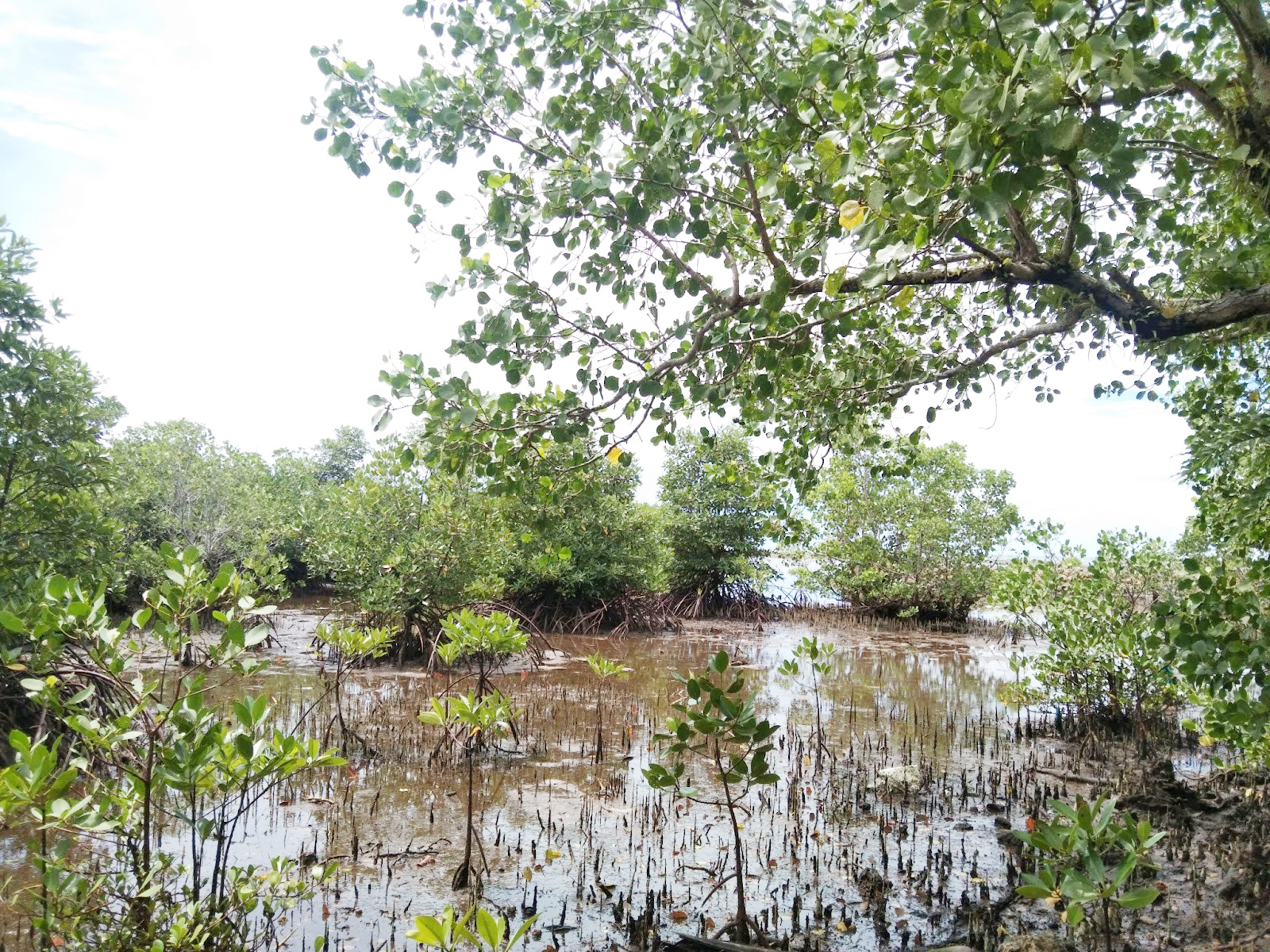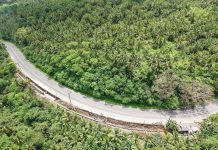GUIUAN, Eastern Samar — Nine years after the deadly storm surge triggered by Super Typhoon ‘Yolanda’ (international name: Haiyan) flattened communities in Eastern Visayas, residents of a village in Guiuan town still feel anxious.

It is because the seawall in Barangay Bungtod that was destroyed by Yolanda in November 2013 remained far from fixed, exposing coastal communities to hazards.
“Yolanda’s winds were so strong and I could hear the waves crashing against the seawall since my house is just near the shore,” recalled Oscar Gaje, barangay captain of Bungtod.
Federico Paglinawan Jr., also a resident of Bungtod, said they saw more destruction when Typhoon Ursula (international name: Phanfone) struck Eastern Visayas in 2019 because the coastal defense remained damaged.
“Ursula brought us more water than wind so the houses near the shore were almost submerged,” he said.
In a bid to protect residents from waves and storms, coastal communities like Bungtod are engaging in mangrove restoration.
Successful restoration
Mangrove patches in Bungtod protected residents when Yolanda pummeled many parts of Visayas. Most of the mangroves near the shore, however, did not survive the onslaught. So community members have been planting and rehabilitating mangroves.
Mangroves in areas severely damaged by the super typhoon are now recovering. Gaje said that almost half of those living along the shore are growing seedlings, thanks to the different activities organized by the environment and natural resources office in Guiuan and non-governmental organizations such as SIKAT Inc.
“We help whenever there are activities conducted. It’s nice if we receive incentives after like the post-Yolanda cash for work, but without it we’ll still help because it’s for our community,” said Bernardino Tanqui-on, a father and resident of Bungtod.
Mangrove forests guard coastlines all over the world by minimizing losses of life and damage to properties. Mangrove forests cover roughly between 33 million and 49 million acres of the planet and are one of the world’s most productive ecosystems, the World Wildlife Fund said.
These coastal ecosystems prevent coastal erosion, improve water quality, and act as breeding ground of coastal species.
They also play a vital role in the climate fight. These trees can store carbon dioxide for hundreds— sometimes even thousands—of years, making them among the most carbon-rich habitats on Earth.
According to the Protected Area Management Office of the Guiuan Marine Resource Protected Landscape and Seascape, 104.39 hectares of recovered areas with planted seedlings have been mapped out as of 2020.
Mistakes in planting
On the other hand, residents of Barangay Sulangan, another barangay in Guiuan, are encountering problems with mangrove planting.
Angela Amos shared they had various mangrove planting activities post-Yolanda but the seedlings did not survive when planted close to the shore.
“Because they did not survive, we eventually stopped planting and just let them reproduce naturally,” Amos said.
Dr. Jurgenne Primavera, a marine scientist and mangrove expert, said the efforts were unsuccessful because “wrong species [are] planted in the wrong sites.”
“Planting at the seafront will not give us the mangrove area we need for environmental sustainability. For one, it has notoriously high mortality rates because the lower intertidal to subtidal location is not ecologically favorable,” Primavera explained.
Because of the lack of mangrove patches, the only source of protection of residents in the area is a seawall.
Barrier
Sulangan’s seawall stretches from the seafront area of the famous San Antonio De Padua Parish Church to the corner street of the households living close to the shoreline.
The residents are less anxious when cyclones are approaching Guiuan because of the seawall. However, it becomes a breeding ground for mosquitoes during rainy days due to trapped water and waste.
While seawalls lessen the damage of typhoons to homes and properties, residents of Sulangan still want their mangrove forests to thrive.
“Mangroves are home for fish and other sea creatures so we are still helping our community officials and our Bantay Dagat in protecting them,” Amos said, noting that residents monitor illegal activities and comply with policies such as the ban on mangrove cutting.
Residents of Baras, a neighboring barangay of Sulangan, do not conduct massive mangrove planting activities like Bungtod. But they disagree with the idea of building a seawall in their shoreline.
“It’s still up for discussion between the council and the residents. But yes, the fisherfolk already stated their dislike for seawall construction,” said Jim Abrajano, a barangay official.
Fishing is the main livelihood of Baras residents. Fishermen put their boats behind thick mangrove trees along their shoreline whenever there are typhoons in hopes that they will be protected by the mangroves’ roots and branches.
They expect the seawall will affect their lives and livelihood if it is constructed.
“We still have a lot of mangroves but I think a seawall ould also be a big help. However, if the majority of the people here won’t opt for it then that would also be okay with me. It’s their livelihood that’s on the line so it should not be taken lightly,” Remedios Gapate, a resident of Baras, said.
Coastal greenbelts better
Primavera, the chief mangrove scientific advisor of the Zoological Society of London and co-chair of the IUCN mangrove specialist group, said she is personally not for seawalls.
“What we need are coastal greenbelts,” she said.
“Guiuan specifically needs more beach forests because it has very steep shorelines, that’s why if the wrong species are planted they don’t survive,” Primavera added.
Primavera and Oceana Philippines earlier called for legislation that would create coastal greenbelt zones composed of mangroves and beach forest areas to protect coastal communities from the severe impacts of climate change.
In a report released this year, the Intergovernmental Panel on Climate Change said that while seawalls effectively reduce impacts to people and assets in the short-term, these defenses “can also result in lock-ins and increase exposure to climate risks in the long-term unless they are integrated into a long-term adaptive plan.
This story was supported by Climate Tracker Asia and Oxfam Pilipinas
By APRILLE ANN YODICO



